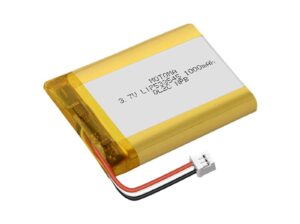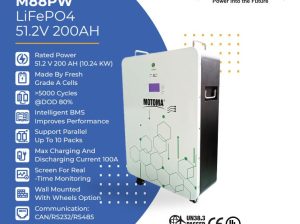IEC 61960: Unraveling the International Standard for Battery Pack Safety and Performance
Understanding the Significance of IEC 61960 in Ensuring Reliable Battery Performance
In today’s technologically driven world, batteries power a vast array of devices, from smartphones to electric vehicles. With the growing demand for efficient and safe battery solutions, it becomes crucial to have a standardized approach to evaluate and compare battery performance. The International Electrotechnical Commission (IEC) recognized this need and developed IEC 61960, a standard that lays out essential guidelines for testing the performance of rechargeable battery packs. In this blog post, we will explore the significance of IEC 61960, its key provisions, and how it empowers the battery industry with reliable and comparable results.
What is IEC 61960?
Did you know that IEC 61960 is an international standard that outlines the test procedures and ratings for rechargeable lithium-ion and lithium-ion polymer battery packs? It’s also known as the “Secondary cells and batteries containing alkaline or other non-acid electrolytes – Secondary lithium cells and batteries for portable applications” and is widely used by manufacturers, researchers, and regulatory bodies to ensure the consistent performance of battery packs.
Purpose of IEC 61960
The primary purpose of IEC 61960 is to ensure that the performance characteristics of rechargeable lithium-ion and lithium-ion polymer battery packs are assessed uniformly. The standard establishes standardized testing methods, which include various electrical, thermal, and mechanical tests. By following these testing procedures, manufacturers can provide reliable data on their battery packs’ performance, aiding consumers in making informed decisions while enabling regulatory bodies to set relevant safety and performance regulations.
Key Provisions of IEC 61960
IEC 61960 includes several key provisions that outline the standardized testing procedures for lithium-ion and lithium-ion polymer battery packs. Let’s delve into some of the essential elements:
- Electrical Performance Tests: The standard specifies a set of electrical tests to evaluate the battery pack’s capacity, voltage, and internal resistance. These tests help determine the battery’s ability to store and deliver energy efficiently.
- Mechanical Tests: IEC 61960 covers various mechanical tests, including those for drop impact resistance, vibration resistance, and mechanical shock. These tests assess the battery pack’s structural integrity and ability to withstand physical stress.
- Environmental Tests: Battery packs are subjected to environmental tests, such as high and low-temperature cycling and storage, to evaluate their performance under different temperature conditions. These tests provide insights into how battery packs perform in real-world applications.
- Safety Tests: The standard includes tests to assess the safety aspects of battery packs, including tests for overcharge, short circuits, and thermal abuse. These tests ensure that the battery packs meet stringent safety standards and reduce the risk of hazards.
- Cycle Life Testing: IEC 61960 outlines procedures to determine the cycle life of battery packs. Cycle life testing involves charging and discharging the battery packs multiple times to assess their performance over their expected lifespan.
- Reporting Requirements: The standard specifies the essential information that manufacturers must provide in their test reports, ensuring that all critical performance parameters are clearly communicated.
Empowering the Battery Industry
IEC 61960 is a crucial tool that empowers the battery industry in several ways:
- Consistency and Comparability: IEC 61960 ensures consistent evaluation of battery packs through standardized testing procedures. This creates comparability across different manufacturers and testing facilities, providing reliable data for informed decisions by consumers and businesses.
- Quality Assurance: Battery manufacturers can validate the quality and performance of their products through standardized testing procedures outlined in IEC 61960. Adherence to this standard instills trust in the reliability and safety of battery packs.
- Regulatory Compliance: When developing safety and performance regulations for battery packs, regulatory bodies frequently refer to IEC 61960. To comply with these regulations, manufacturers must adhere to the standardized testing procedures outlined in the standard.
- Innovation and Research: The IEC 61960 serves as a catalyst for promoting innovation and research in the battery industry. It establishes a standard framework for assessing novel battery technologies, which helps in creating more effective, long-lasting, and secure battery packs.
Conclusion
The IEC 61960 standard is crucial in ensuring the trustworthy and comparable performance of rechargeable lithium-ion and lithium-ion polymer battery packs. It provides uniform testing procedures, enabling manufacturers, consumers, and regulatory bodies to consistently assess battery packs. Adhering to IEC 61960 provides the battery industry with quality assurance, regulatory compliance, and a foundation for innovation. With battery technology constantly advancing, IEC 61960 remains a primary point of reference for evaluating and improving battery performance in portable applications.
Comments (2)
You must be logged in to post a comment.



[…] 60086-1 is an international standard published by the International Electrotechnical Commission (IEC), which sets forth the general […]
[…] designed to operate at elevated temperatures compared to conventional lithium-ion batteries. While standard lithium-ion batteries typically operate within a temperature range of -20°C to 60°C, HTLIBs can withstand temperatures […]